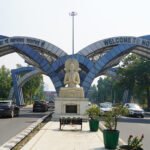On the concluding day of the two-day regional workshop on PM GatiShakti NMP organised by DPIIT (Department for Promotion of Industry and Internal Trade), Ministry of Commerce and Industry, the following presentation on their respective state logistics policies was made by Haryana, UP, Bihar, Jharkhand, Odisha, and West Bengal. They were asked to hold inter-department meetings to raise awareness of PM Gati Shakti’s principles and the development of infrastructure.
Sumit Dawra, special secretary of logistics, DPIIT, the government of India, spoke at the closing session on Wednesday and requested states to ensure communication with investors and local business organisations to comprehend the interventions required for both infrastructure and logistics systems. She requested that interventions be made in areas of action that include the logistics ecosystem, such as human resources development, logistics capacity building, and skilling – concentrate courses on logistics and supply chain to be introduced into university course curricula.

Dawra asked to hold inter-department meetings to raise awareness of PM Gati Shakti’s principles and the development of infrastructure.
She also added that a cluster-based region approach to developing economic centres and corridors should be reinforced by leveraging inland waterways NW1 (National Waterways) connectivity. The development of a logistics park integrated with manufacturing clusters for facilitating the development of warehouses, integrated check posts, land customs stations, and temperature-controlled facilities should be in the policy framework, she said.
According to Dawra, the emphasis should be on luring private investments in logistics-related infrastructure, giving the logistics industry status to facilitate easy financial access on favourable terms, creating city logistics committees, and developing city logistics plans for effective freight flow management. This is so that action plans for reducing logistics costs can be duly formulated, identifying priority areas for implementing multimodal infrastructure-related interventions.
She requested the inclusion of start-ups for solutions to boost logistics efficiency in order to map freight flows in order to have a demand-driven strategy for logistics efficiency for the next 10-15 years.

Action plans for reducing logistics costs can be duly formulated, identifying priority areas for implementing multimodal infrastructure-related interventions.
The state’s infrastructure and logistic potential, which includes 8 cutting-edge motorways, India’s first inland waterways NW1 (National waterways), and 1,100 km of DFC track spanning through 20 districts, are highlighted in the UP Warehousing and Logistics Policy 2022. The new Warehousing and Logistics Policy 2022 also lays out investment opportunities and guidelines, fiscal and non-fiscal incentives, and fast-track land allocation, which is expected to provide employment for about 1,48,000 individuals in the logistics industry. Every industrial park and zone in the state has land set aside for the logistics industry.



















